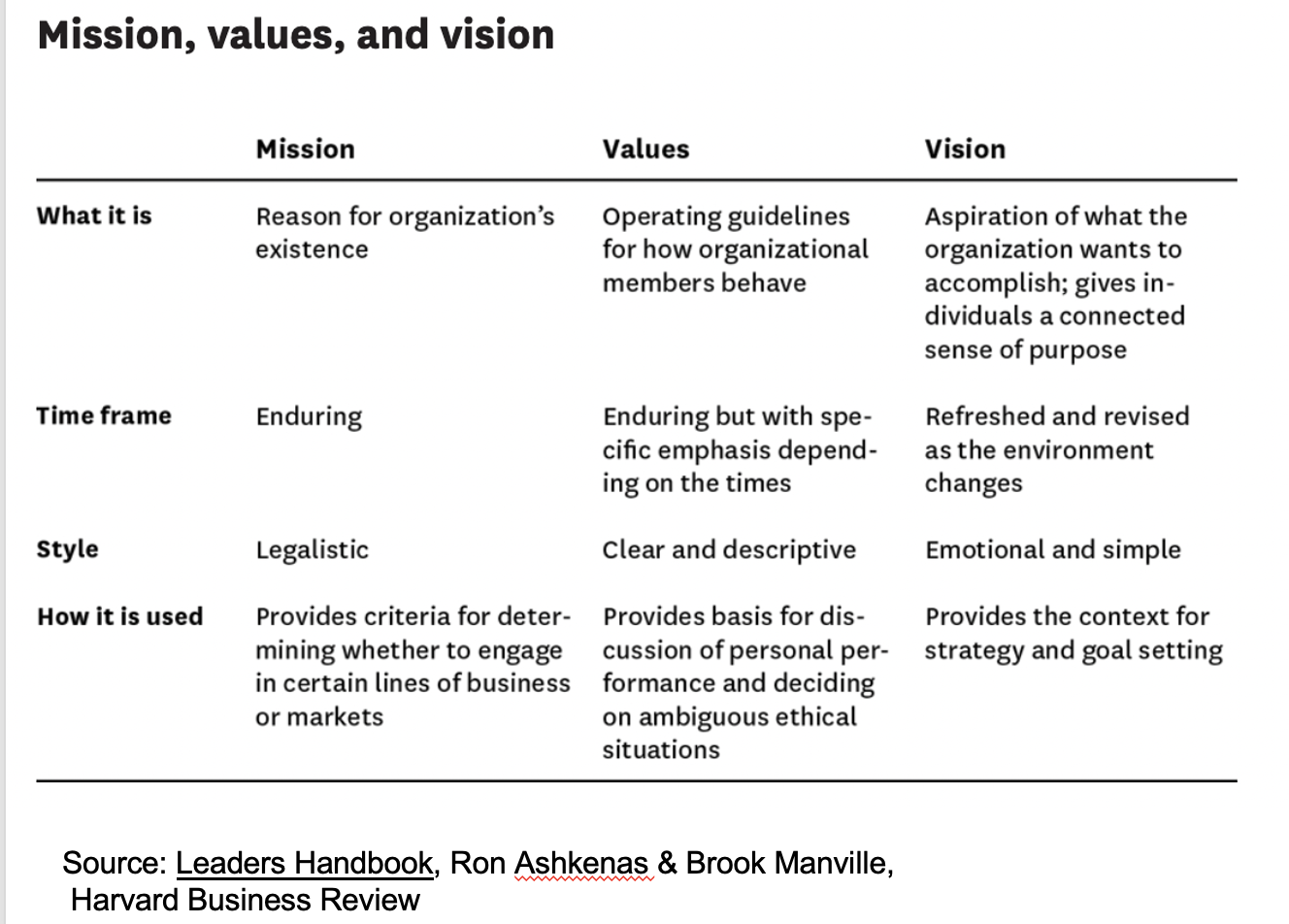Strategic Leadership 101: Crafting a Compelling Shared Vision
Jul 20, 2022Research going back several decades reveals that the two most important attributes people look for in a leader they would willingly follow are honesty and vision.

This post is the first in a series about how to show up as your best self in a strategic leadership role, whether you are running an organization or in charge of a team within a larger organization. How do we marshal the tools of strategic planning--vision, mission, values, theory of change, theory of action etc.--in the most compelling possible way?
We'll begin by looking at the question of how to craft a compelling shared vision.
A compelling vision is about clarity and shared purpose in pursuit of a better future
As change agents, our vision for a better world is necessarily larger than ourselves--and this means we need a vision that doesn't just come from our own head and our own heart. We need to figure out how to engage others to co-create that vision. As a leader you do need to have a point of view, but a compelling shared vision must also incorporate the aspirations and dreams of others.
“Leaders never make extraordinary things happen all by themselves. Leaders mobilize others to want to struggle for shared aspirations, and this means that, fundamentally, leadership is a relationship.”
--Kouzes and Posner
Distinguishing between mission, values, vision and strategy
Even if you've spent a lot of time with strategic planning processes it can still be helpful to review the distinctions between some of the key terms that get thrown around. Harvard Business Review's Leader's Handbook has a very useful chart laying out these distinctions.

Drawing on these distinctions between mission, values and vision, we can link these three building blocks of strategic leadership together in the following definition of strategy.
Strategy is how we carry out our mission, consistent with our values, in order to maximize our impact in pursuit of our vision.
4 steps from the Leader's Handbook for crafting a compelling shared vision
-
Determine if the time is right
A great way to do this is to ask a set of questions of your organizations key stakeholders. Here are some of the factors to consider
- If you ask the organization's key stakeholders to state the vision do they all give a similar answer? If so, you're on the right track, but you may still have work to do.
- To the extent that stakeholders can identify a shared vision, can they also clearly connect it to the work they each do on a daily basis? If not, there is definitely work to do in communicating about the vision in a way that translates into the team's daily actions.
- Has the organization recently experienced major shifts in the competitive landscape in which it operates? If so, it may be worth checking whether the established vision is still a compelling north star to guide the organization's work moving forward.
-
Listen and reflect on inputs from key stakeholders, your environment and yourself to create a first draft
There's certainly room for inspirational leadership when it comes to crafting a vision, but a truly compelling shared vision must be grounded in deep listening to key stakeholders as well as careful attention to the key factors in the operating environment. This step of listening and incorporating other's interests is vital for creating a vision that others will be excited to get behind. -
Engage key stakeholders in a process to refine and further develop the vision together
There are at least three different methods for engaging key stakeholders to further develop and refine vision together:
--Develop a first draft yourself then do deep listening with stakeholders and adapt and evolve accordingly. Cameron Herold's Vivid Vision method can be a helpful starting point for this approach.
--Develop some key principles and give these to a team to develop a first draft
--Develop some key questions to ask in focus groups and interviews and synthesize a first draft based on responses
All these approaches require you as a leader to show up with humility and a willingness to listen deeply and iterate in response to feedback.
-
Communicate the vision and make it real: help people connect with it in their daily work
This step is about communicating the vision to all stakeholders in ways that help people with different roles understand how their specific, daily work connects to the vision. Their are many ways to do this drawing on story-telling. This is an opportunity for making shared meaning through narrative and dialogue. Ron Ashkenas and Brook Manville, the authors of the Leader's Handbook also point out that graphic displays, such as "From-To" charts can be very helpful here, laying out the old way vs. the new way across different aspects of given person's daily routine.
Stay connected with news and articles
Join us to receive the latest news and updates from our team.
Don't worry, your information will not be shared, and you can unsubscribe at any time
We hate SPAM. We will never sell your information, for any reason.

